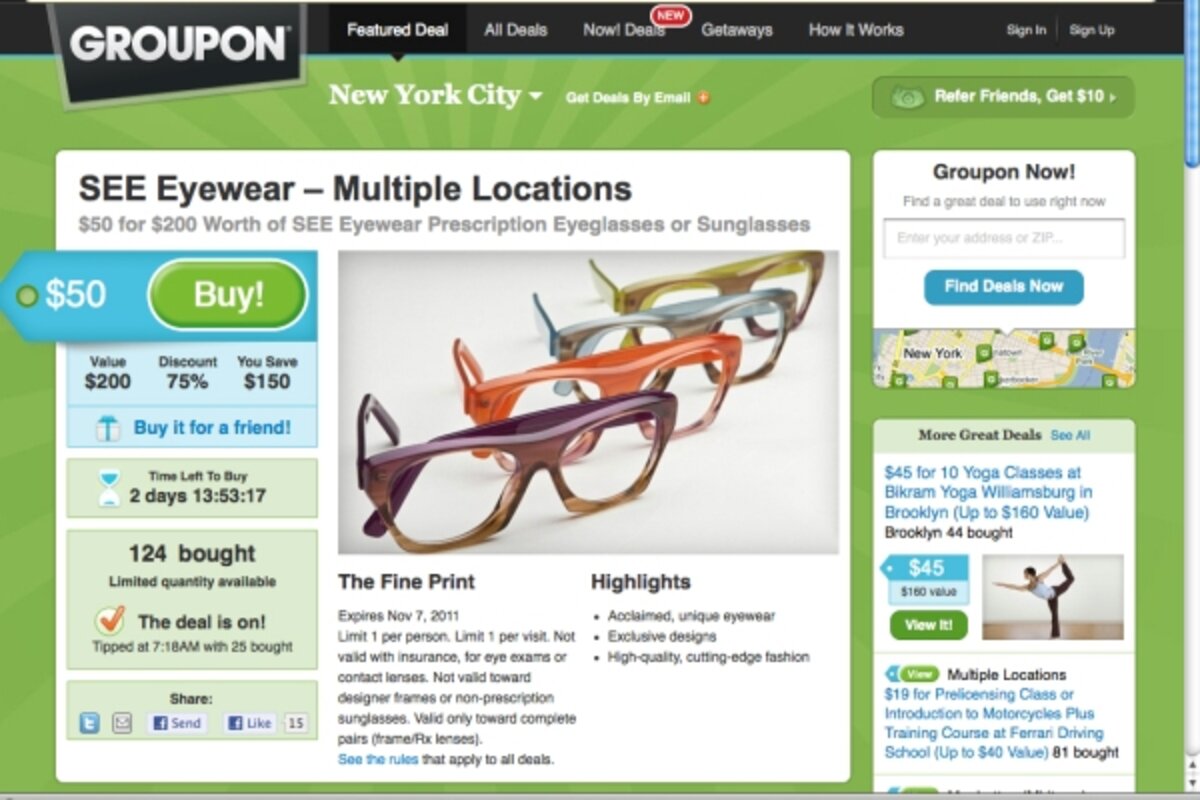Groupon and daily deals: the 'low-fat cookie' problem
Loading...
If you haven’t heard about how daily deals sales are essentially taking over retail, well, welcome back from media Siberia. In just a few years, Groupon and its biggest competitors have become multibillion-dollar enterprises, spawning hundreds (maybe thousands) of copycats. Even search giant Google – which this month announced it is buying Dealmap, a daily deals aggregator with a reported 2 million users – is jumping into the daily deals’ business.
Still, there are plenty of unanswered questions about these deals. Critics have argued that the market is getting oversaturated, the numbers don't work out well for businesses, advertisers are turned off by the whole thing, and that it’s all a big bubble approaching the bursting point. But an aspect that’s oft overlooked is whether all these potential customers signing up for daily deals really like using (and continuing to use) them in the first place.
One of the key points in behavioral economics is “You get what you pay for.” To be more specific, when we pay more for an item or service, we value it more. Whether you realize it or not, you do this all the time – in all sorts of tests, people say that, for example, the high-end skin cream makes their skin look better than the chemically identical drugstore brand.
This quirk in human engineering presents an interesting dilemma for the daily deals. Sure, it’s ingrained in us to want the most for our money, and to seek ways to get more for less. But how do we reconcile those impulses with the behavioral narrative: “This thing was deeply discounted, so it won’t work as well/be as enjoyable/provide as much value as a full-priced version”?
Such contradictions can hurt brands. If we know that people inherently value something more when they pay full price for it, then we’re creating a retail market in which buyers (and sellers) are set up to stay unsatisfied.
For buyers, it’s like the infamous “low fat” cookies craze – each one is less satisfying than its full-fat counterpart, so you wind up eating three times as many. For sellers, you have a clientele that doesn’t care about the quality of your goods – they’re totally focused on the price, and they’re less satisfied no matter what you offer them.
Consider a study conducted by a group of resort properties, which found that the most positive feedback left on comment cards was from guests paying full price. The most critical comment cards came from guests who’d deliberately bought at deeply discounted rates. As Entrepreneur mag put it:
“Part of the explanation for that may be that the discounted rates drew a different type of customer. But it also suggests that, in the same way people told they were taking a more expensive drug expected and received better outcomes, guests paying substantially higher rates expected a better experience and molded their assessment to their expectation.”
Are there ways around this? Of course. Prepay discounts (buy 10 sessions, pay for just eight), seasonal sales, packages, and more are excellent ways to let people feel as though they’re getting a deal. But while doing a Groupon may bring in a flood of cash for a week, don’t expect to win a steady stream of satisfied regular customers.
And for those entering the daily deals market, remember, the Snackwell's craze eventually came to an end when people realized they really just tasted terrible.
– Melissa Lafsky is the editorial director of , a website covering technology in retail, and the former editor of the Freakonomics blog. An earlier version of this story appeared on High Low.




